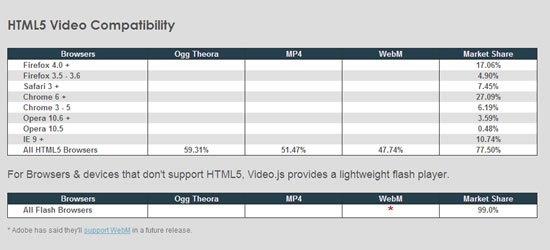

Otherwise, the floating play button is a little awkward. The Play pause button works for HTML5 video and this Video.JS. If you can’t be troubled to deal with a poster, you might wanna toss a border or something on video elements to sort of visually block off that area. Even if you preload, you don’t see anything but blank white unless you have a poster. In older versions of Video. It supports HTML5 video and Media Source Ext. Embed videos uploaded to your WordPress media library using direct links in the shortcode. videojs/video.js, Video.js - HTML5 Video Player Video.js is a web video player built from the ground up for an HTML5 world. Embed responsive videos for a better user experience while viewing from a mobile device. It supports HTML5 video and modern streaming formats, as well as YouTube and.
#Vjs html5 video player mp4
I also learned that the (only?) way to get a thumbnail to show up on mobile (at least for iOS) is to use a poster attribute. Embed MP4 video files into a post/page or anywhere on your WordPress site. Video.js is a web video player built from the ground up for an HTML5 world. You can skip loop if you don’t want that, but all the other three are required if you want the autoplay attribute to work. Aside from the built-in Video.js component-creation methods, the player includes a createModal() helper method. If you have all four of those attributes, the video will actually autoplay (and loop) on mobile browsers, just like a GIF would, only with far better performance. The ModalDialog component is part of Video.js core and provides a baked-in UI for full-player overlays. One of the places this shows up regularly is in the attribute soup that is required to make video be a GIF-replacement: It’s not literally the default - you have to add it, but you know what I mean. Note that the user still has the ability to go fullscreen with the video even in the playsinline scenario, so I’d say it’s probably a smart default choice. (While we’re getting meta, I’m making sure those videos above have playsinline on them right here in this blog post.) (If you’re like me, you tried to play that video from the play button on the video in the video, only to realize it’s not a real play button. Here’s what it looks like with playsinline: It supports HTML5 video and modern streaming formats, as well as YouTube and Vimeo. Here’s what it looks like without playsinline: Video.js is a web video player built from the ground up for an HTML5 world.


The most useful API doc to start with is usually the Player class. VHS supports HLS and DASH and is built into video.js 7, see the video.js 7 blog post. Notice: this project will be deprecated and is succeeded by videojs-http-streaming. You'll find specific details about functions, properties, and events. This library has been generated from videojs-contrib-hls Based on the following description.
#Vjs html5 video player manual
Mobile browsers, will play the video right where it is instead of the default, which is to open it up fullscreen while it plays. These API docs at are automatically generated from the jsdoc comments in the code of the main branch of the Video.js repository. Manual Setup Getting References to Players Using videojs Using videojs.getPlayer () Using videojs. The answer actually is quite clear and I feel a little silly for not knowing it. registerComponent ( 'exampleVjsBridgeComponent', ExampleVjsBridgeComponent ) export default ExampleVjsBridgeComponent įinally, the Video.I got myself confused about this the other day, went around searching for an answer and came up empty on finding something clear. Import React from 'react' import videojs from 'video.js' import 'video.js/dist/video-js.css' export const VideoJS = ( props ) => // Make sure to register the Video.js component so Video.js knows it exists


 0 kommentar(er)
0 kommentar(er)
